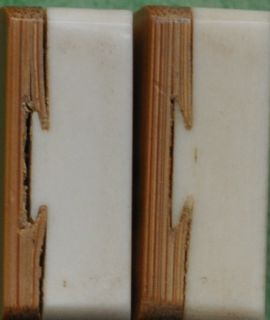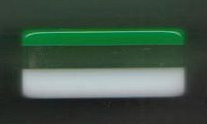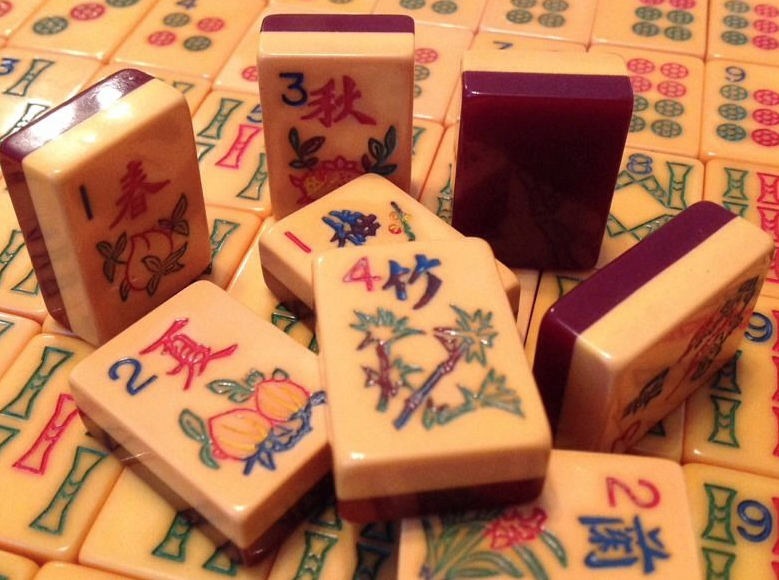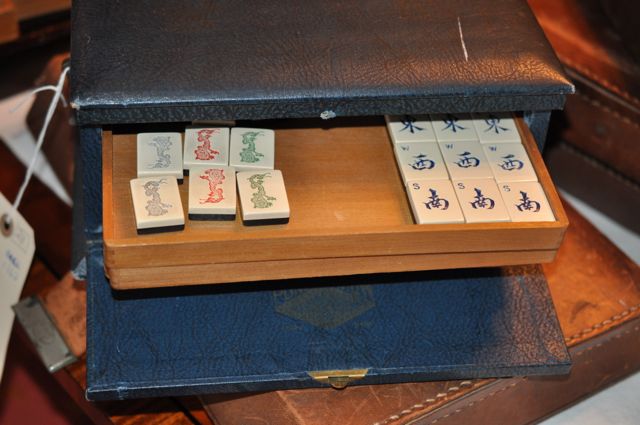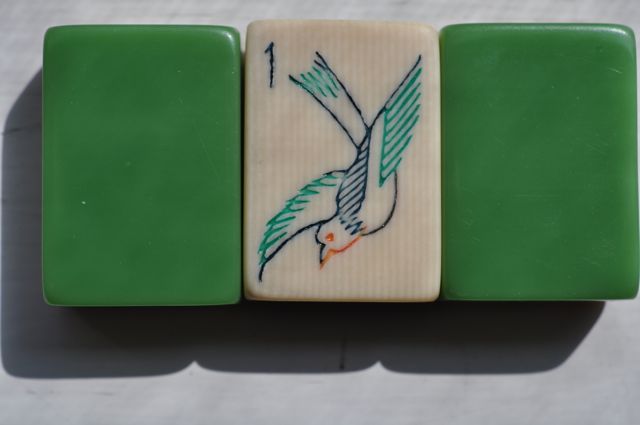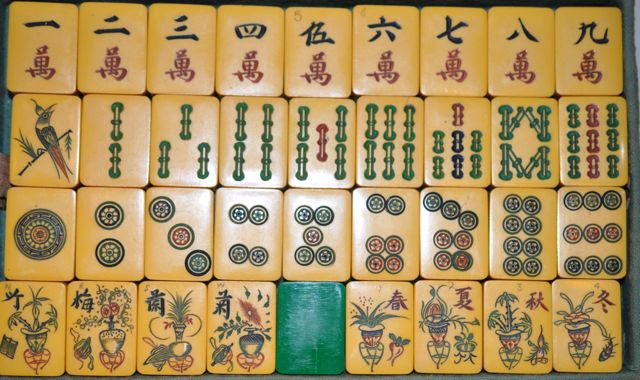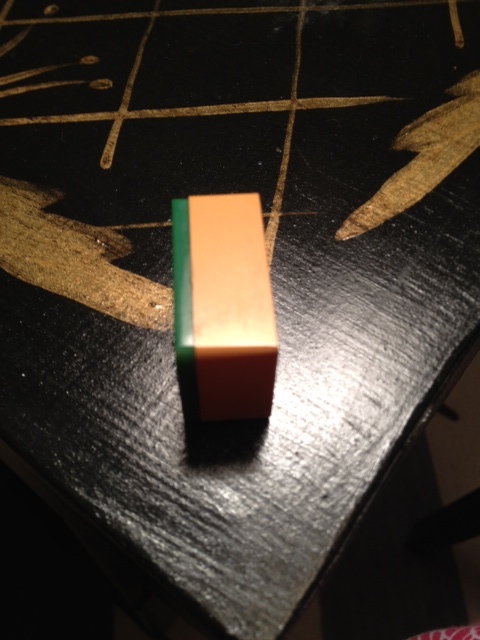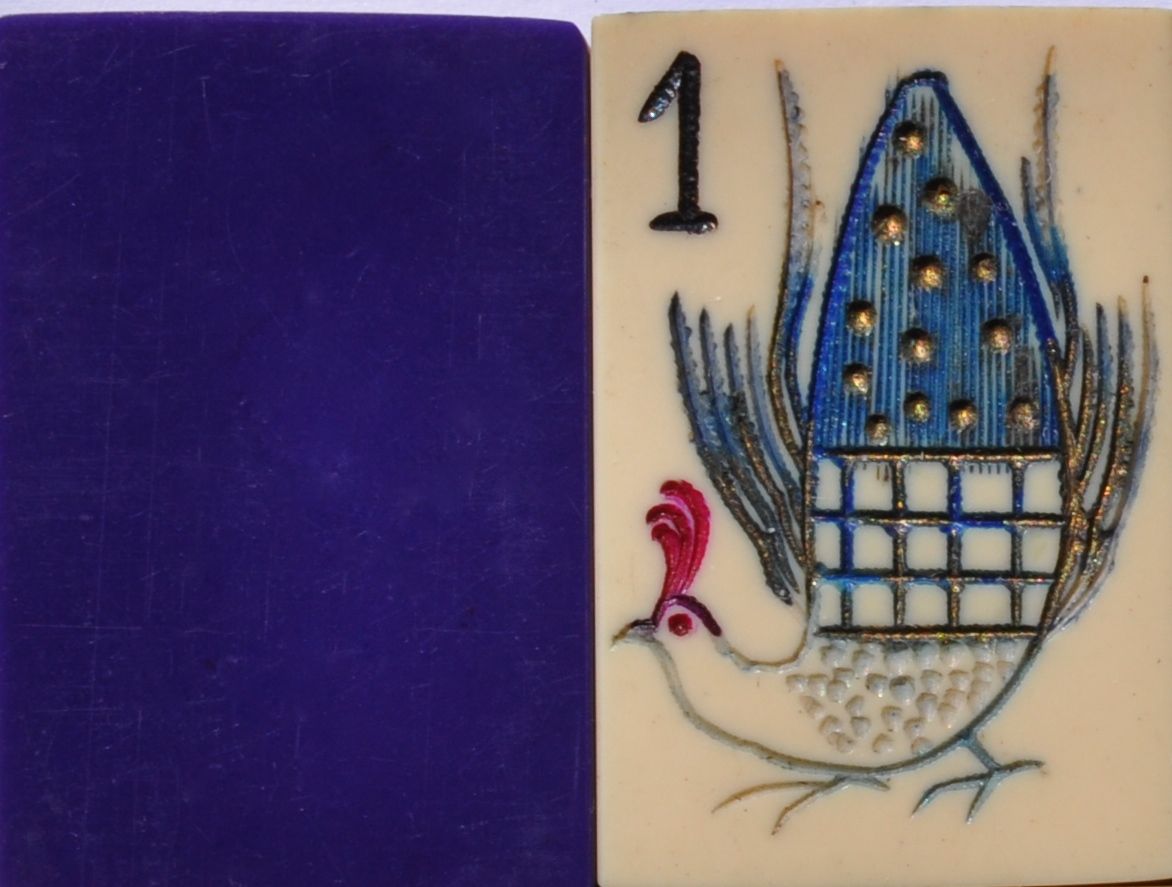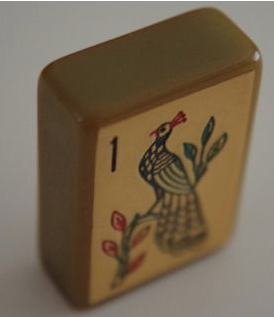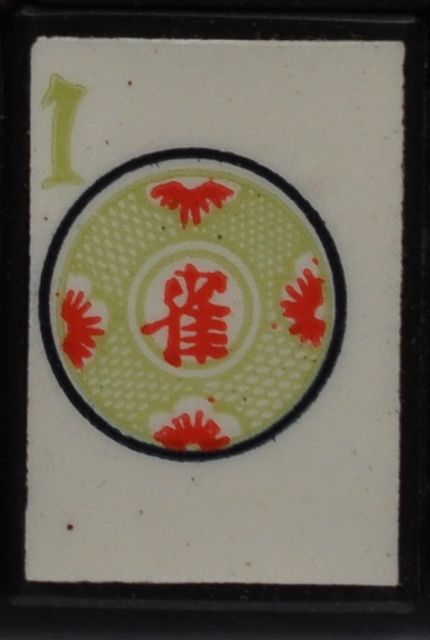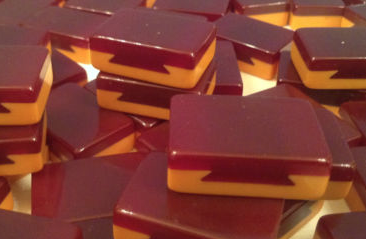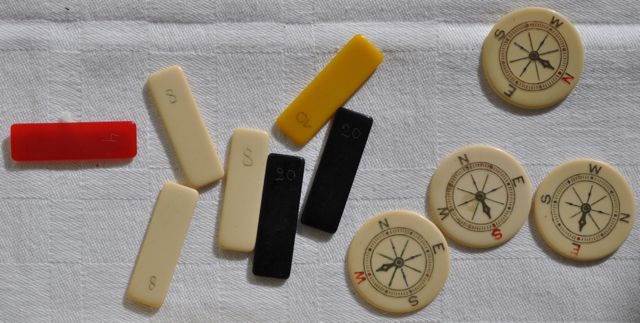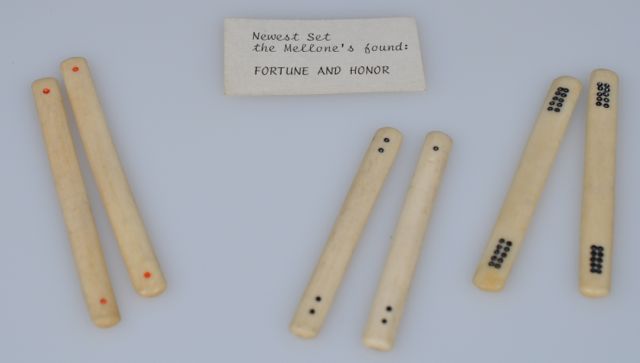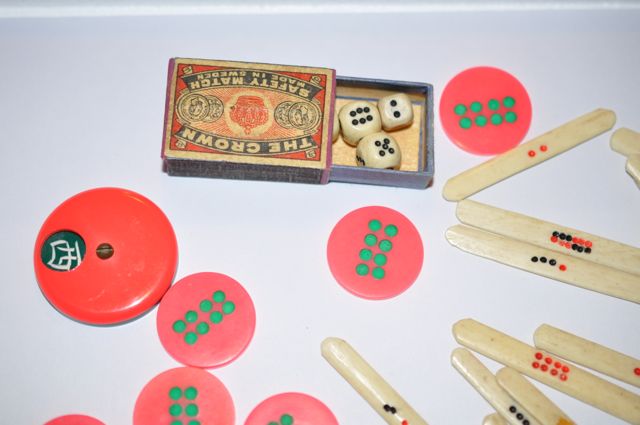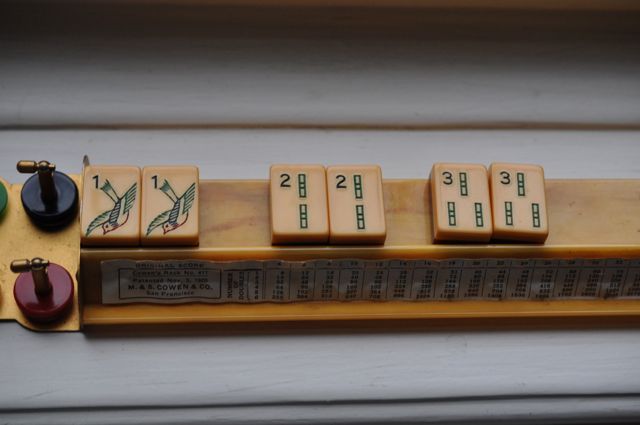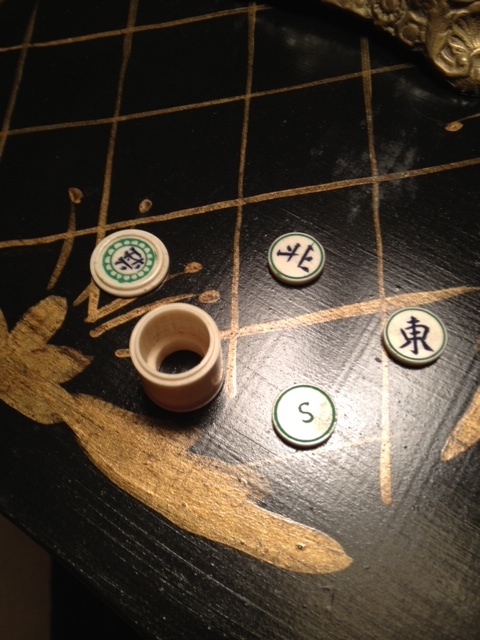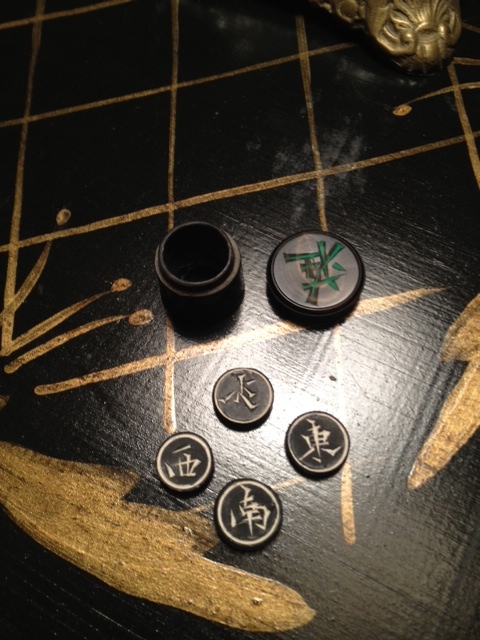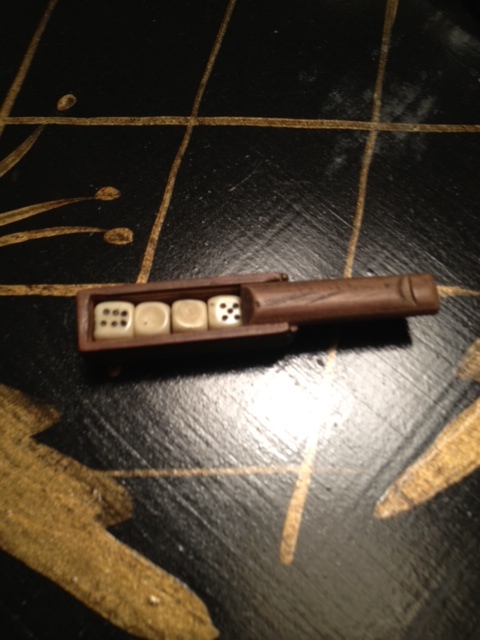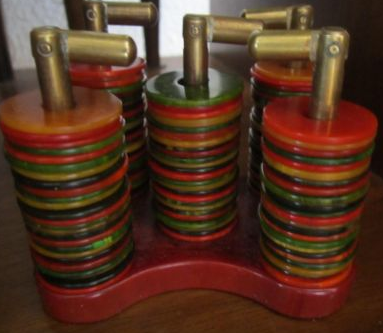Many words associated with mahjong are quite confusing at first. Certainly, even the names of the suits: Dots, Bams, and Craks, are somewhat mystifying, with only the Dots even slightly understandable. But Dragons, and Flowers (that can look like scenery, people, or animals, etc.,) really get things complicated.
You can look at some other pages on this website, here and here and here to better understand the tiles you have, but here are some other terms you might want to know.
We will start with basic types of tiles.
Bone and bamboo: tiles made from bone dovetailed into bamboo. The thicker the bone, the more expensive the set.
Very few sets would have bone dovetailed into plain wood, although some bone tiles are dovetailed into ebony:
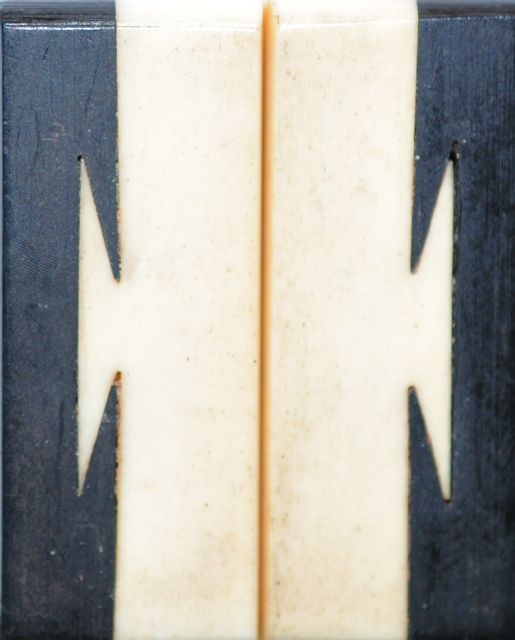
Some lucite tiles are tri-color, or more accurately tri-layer, with the middle layer clear:
The white surface on the above tile would be carved, the middle separates the top from the bottom, and the green is the back of the tile.
Other tiles can be two-tone, or 2 tone, here in burgundy and beige
from antiquesrabetterbet on ebay. And sometimes the tiles are white and black, such as those you see with Pung Chow :
The face of the tile can be French Ivory (plastic made to resemble ivory) and the back a different color:
On some Chinese Bakelite tiles, we have another piece of plastic attached to the tile:
This back, seen here in green, is called a wafer. Sadly, many of these have been known to get detached, but happily most can be repaired with a bit of glue.
A fairly clear photo of a true wafer back tile. You can see the difference in look of the two colors of plastic, and how the green wafer is not truly lined up correctly with the base of the tile, most clearly seen on the top left. (This may have happened some time during this tile's history, when the wafer fell off and was incorrectly glued back.)
Another type of tile with a wafer back.
Enrobed tiles are another thing all together:
The color may just surround the four sides of the tile, or the color may also cover the back of the tile. Both are considered enrobed.
There is faux-enrobing (false enrobing) although the tile set itself may be quite valuable:
Above a thick paper sticker has been glued into the center of the tile, making it look enrobed.
Bakelite tiles can be dovetailed too:
There are also game accessories. We will start with the wind indicators and betting pieces.
Above we have a plastic version of scoring sticks, also known as counters, and the round Wind indicators which are placed on the table to indicate which player is associated with which wind.
Some bone counters, with different numbers of dots on them to indicate different numbers
And another set above which seems to be using both a plastic scoring system along with the bone counters.
The round red and black plastic object seen above is known as a bettor. When five people play, one person is out but that person has a chance to look at everyone's hands after the Charleston, and to bet on who will win the game. The better uses the bettor to show the Wind direction associated with the person who is predicted to become the winner.
The round coins on the right are often seen stacked on the spindles on racks. After every hand instead of putting money into the kitty or into the common pot, some people exchange "coins" or "tokens" and these are taken from the collections of the losers and given to the winner. Sometimes scoring is done by the color of the coins, although here more help is given and there are values on the coins.
It must be noted that racks are an invention of those people and companies that wanted to export tiles and sets to Europe and the United States. Originally the game was played with tiles standing upright on the table, not leaning against a rack. Tiles that were called were displayed by placing them in front of the player's standing tiles, flat on the table.
But racks became very popular with Western players.
Racks can be carved, without a display shelf for "called" tiles which are placed on the table in front of the player. This rack is seen with the side that would be facing the other players; the slanted side is hidden in this photograph.
There are beautifully lacquered racks with a display area (see dragon on top) for called tiles, a rest (at the bottom of the image) for concealed tiles, and a "bank" the hollowed out area within the rack used to store bone counters.
Here follow two versions of Catalin racks, one with the scoring list in the center, making it easier to figure out the points for different hands. You can see the spindles to the left with the stack of "coins."
and the more plain version.
Oftentimes, sets came with five racks. Why? Because when a player would rotate out, and possibly become the better, she'd take her rack, and all her "winnings" with her.
Above you see a ming, the round barrel that houses the Wind indicators, used to indicate each player's wind. This ming is made of bone. The bone wind indicators have the Chinese Characters for North, East, and South, although the Chinese character for South is hidden. The West indicator is lost; these are always so small they can go missing. On this set the Chinese characters are on one side of the disc, and the Western on the other.
A ming and its Winds, this time all made of horn. These discs only have the Chinese characters.
And the small box with a sliding lid called a "coffin" and it should hold four dice. You will note that on these dice the spot for the One Dot is blank. This often is the case.
And here is a bakelite version of a bank. After games were played, coins were stored in banks such as this one, and before each game coins were equally distributed to players to place on the spindles of their rack. (This is the idea we use when we play Monopoly: everyone gets the same amount of money to begin with, and then it just matters how lucky you are and how you play the game.)
Any other Mahjong terms you want to know? Send me an email.

